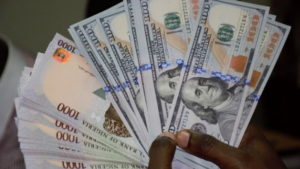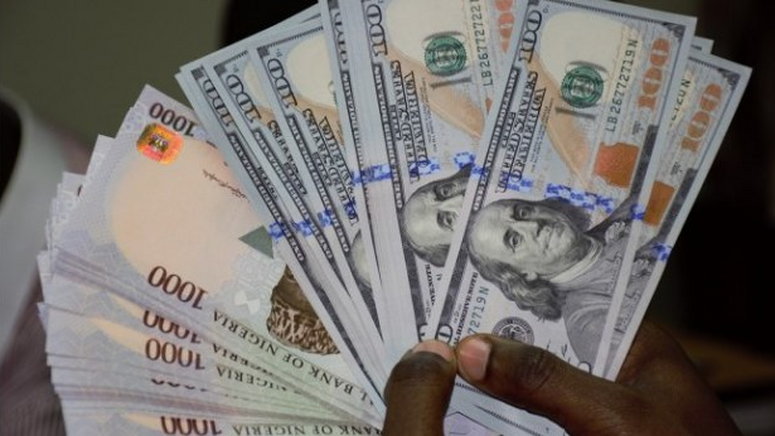CBN and the exchange rate challenge, by Arize Nwobu

The importance of exchange rate as a major macro-economic variable cannot be overemphasized. Exchange rate is the price of one currency in terms of another, and which helps to determine a nation’s economic health and wellbeing of citizens. Countries earn foreign exchange through production and export of goods and services; and the levels of foreign exchange and external reserves influence the exchange rate.
The import-export activity influences exchange rate and other major economic variables, thus, the need for a country to balance imports and exports because both determine the health of the economy. An economy is healthy when imports and exports are growing.
In the dynamics of exchange rate, low exchange rate supports foreign exchange (FX) inflows and exports, while high exchange rate supports imports. Nigeria’s economy has exchange rate challenge which is inherent and recurrent because of its structural imbalance.
The economy is monolithic, factor-driven and import- dependent. As a result, there is always a high demand for FX. Over the years, the Central Bank of Nigeria (CBN) has evolved and implemented different policy options to confront the recurrent FX challenge which sometimes degenerated into a crisis situation.
In 2016, there was acute dollar shortage which weakened the naira to a low of N530/US$1. CBN attributed the development to those hiding illegal money, people desperate to transfer illicit gains out of the country at any cost, and speculators.
Currency speculation creates a destabilizing impact and undermines real economic growth because it is not backed by an underlying economic activity, but driven solely by the motive to make huge gains from currency gyration.
In response, CBN sustained dollar injection into the market; which was made possible by the increase in external reserves, and the conservation of FX through one of its FX demand- management policies, namely, the exclusion of 41 items from the Interbank foreign exchange market.
CBN sustained dollar injection for six months, from February 21 to August 21, 2017. The Bank injected a total of US $9. 964 billion into the FX market until the naira strengthened at N360/US$1 in the Interbank market, and N361/ US$1 in the parallel market.
Going forward, CBN also launched the Naira-Settled Over-the Counter (OTC) FX Future Products in collaboration with FMDQ OTC Securities (FMDQ). The FX Futures Market was introduced to, among other things, ‘’minimize the disequilibrium in the Spot FX Market and cause the rate to moderate, attract significant capital flows to the Nigerian Fixed Income securities and equities market, and achieve exchange rate stability.’’
The FX Futures Market was expected to present opportunities for foreign portfolio investors (FPIs), importers, exporters, governments and other end-users in managing their FX requirements.
Until recently, CBN operated a multiple exchange rate/ managed float regime. As noted by Professor Mike I. Obadan, a member of the CBN Monetary Policy Committee (MPC), the choice of exchange rate was of crucial importance for self-protection from speculative attacks.
The suspended CBN Governor, Godwin Emefiele had noted that the exchange rate regimes under him were to ‘’preserve the value of the domestic currency and maintain a favourable external reserves position.’’
In a press report, Emefiele said that developing economies including Nigeria, where demand for imports was high, needed to adopt exchange rate regime that would ‘’safeguard capital outflow and ring-fence the external reserves.’’
He further noted that a floating exchange rate regime was more suitable for advanced economies because majority of them have convertible currencies which are less exposed to currency gyration.
He added that ‘’countries rarely take the extreme of the regimes, that is fixed or the free floating except in certain cases’’, and that the exchange rate adopted by developing countries tilted towards preventing massive capital outflow and currency criss.’’
The Acting CBN Governor, Mr Folashodun Adebisi Shonubi adopted a unified and free-floating exchange rate which is determined purely by market forces. He abolished all segmentations and collapsed all FX Windows into the Importers’ and Exporters’ (I&E) FX Window.
The World Bank expressed support for the new exchange rate regime and noted that it was necessary to restore macro-economic stability. But in the wake of the new FX regime, the naira plunged to all time low of N945/ US$1 at the parallel market as demand for dollar far outweighed the supply.
CBN noted that the development was not driven strictly by market forces of demand and supply, but attributed it to the ‘’unofficial diaspora remittances.’’
Mr Shonubi noted that many diaspora remittances were not covered officially and found their ways to the black/parallel market.
To stabilize the naira, CBN introduced some intervention measures, including the launching of the Price Verification System (PVS) portal for importers buying foreign currencies. The PVS would provide details on how customers can acquire foreign currencies and at what exchange rate.
The Bank also directed Bureaux de Change (BDCs) to trade foreign currencies at similar rates obtainable on the, I & E Window in order to improve the efficiency of the FX market.
Nwobu, a Chartered Stockbroker and Business Journalist wrote via arizenwobu@yahoo.com Tel; 08033021230







